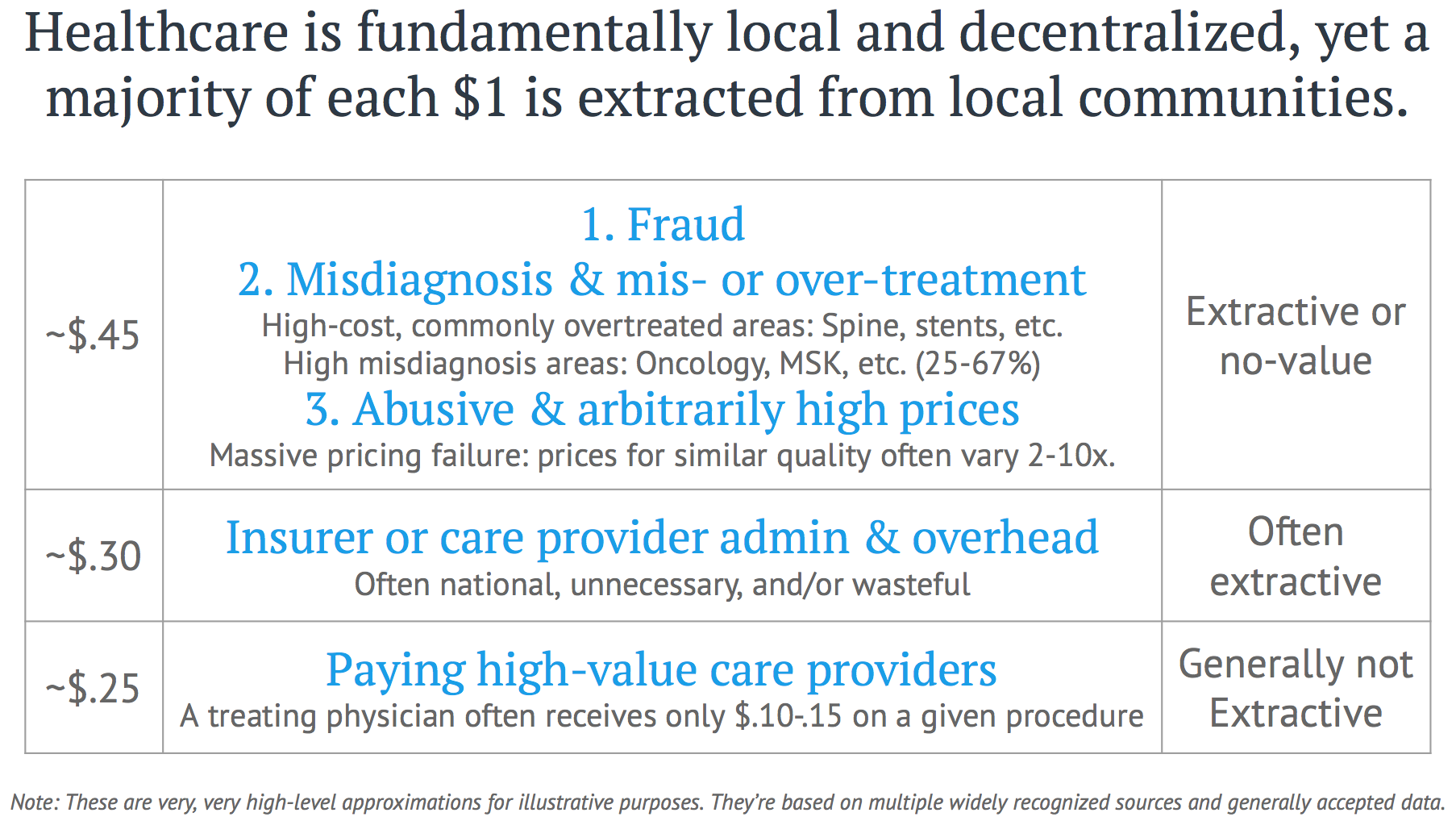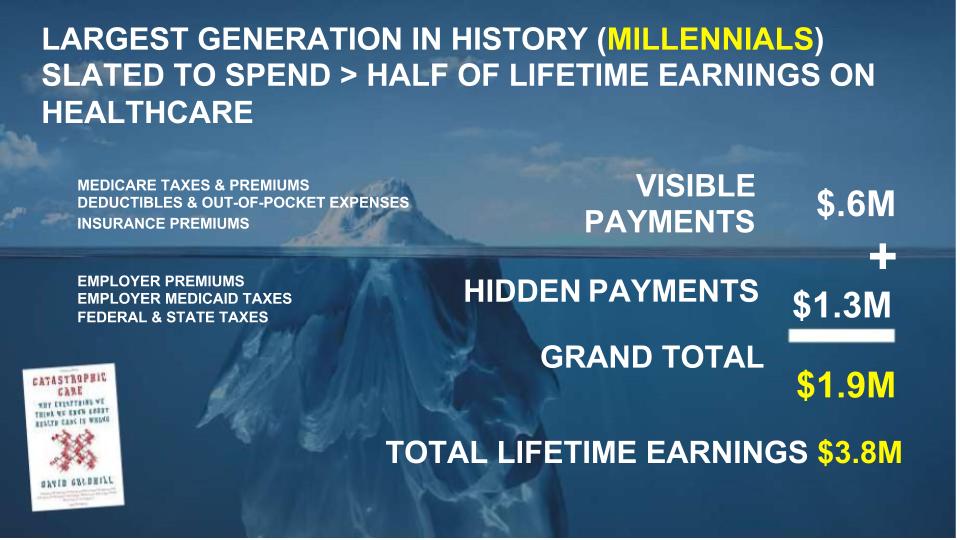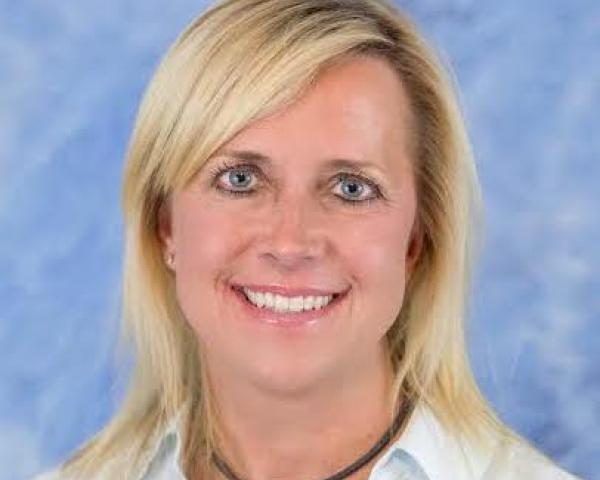'As-a-Service' Model Is Great, but...
As insurers move toward the “as-a-service” model, content must be handled, managed and disseminated in a secure and consistent way.

As insurers move toward the “as-a-service” model, content must be handled, managed and disseminated in a secure and consistent way.

Get Involved
Our authors are what set Insurance Thought Leadership apart.
|
Partner with us
We’d love to talk to you about how we can improve your marketing ROI.
|

Charlie Hanna is the domestic director of insurance for Hyland.
Imagine healthcare customer satisfaction rising to Amazon-like levels. The potential value is not lost on those inside the healthcare sector.

In Part 1 of this series, I argued that Amazon is the critical ingredient in making its healthcare alliance with Berkshire Hathaway and JPMorgan Chase successful—even though previous employer alliances have failed to make a dent in healthcare costs.
Here’s a quick glimpse of how Amazon’s consumer focus, technological prowess, operational efficiency, strategic patience and successful history of turning internal solutions into platforms for new businesses might accelerate the long-needed transformation of healthcare. To imagine how Amazon could transform healthcare, first look at five capabilities that it has brought to retail:
These capabilities enable a virtuous cycle of better information, lower prices, higher customer satisfaction and more customers. They’ve also become standard operating practice in many industries—but not in healthcare. Now imagine the impact of accelerating their adoption in healthcare.
See also: Media Coverage on Amazon Misses Point
Imagine having patient health data with complete longitudinal information and intelligent analytics at every point of care. That is far from the case today. Medical records are stored in silos and, even when electronic, are hard to create, maintain, use or integrate. A Rand study found that physicians are very dissatisfied with electronic medical records because of poor usability, time-consuming data entry, interference with face-to-face patient care, inefficient and less fulfilling work content, inability to exchange health information and degradation of clinical documentation.
Imagine having personalized health pages with intelligible information, recommendations and dashboards based on a comprehensive view of a patient’s health history, condition and provider interactions. The personal page could consolidate and monitor biometric data, chronic conditions, acute ailments, medications, care plans, symptoms and other patient-specific critical data. It could integrate data from sensors and apps. It could intelligently collect patient feedback on critical symptoms based on specific conditions, providing behavioral nudges or alerting care teams as needed.
Imagine having a comprehensive view of cost options for needed treatments or medications—and intelligent assistance in choosing among them? Today, it is almost impossible for a patient or a physician to know the cost for a given test or procedure. Rates can vary tremendously based on where the service is provided, what kind of insurance the patient has, how the services are coded and numerous other factors. This makes informed recommendations and choices impossible. A report by the Robert Wood Johnson Foundation named price transparency as the single biggest factor for controlling healthcare costs.
Imagine a single source for trustworthy quality ratings of hospitals, physicians and other healthcare providers. Today, there is a mountain of quality data from federal agencies, health plans, state governments, patients and others who report on the performance of hospitals and physicians. But, there are no agreed-upon standards for what information should be reported, its accuracy and the underlying data that support it. One group of researchers noted that many quality-reporting efforts “appear to be led by marketing departments that are not aware of appropriate scientific standards.”
See also: 10 Ideas That Could Fix Healthcare
Imagine healthcare customer satisfaction rising to Amazon-like levels. The potential value of these capabilities is not lost on those inside the healthcare sector. Many startups and large healthcare organizations are already working hard to adapt and adopt them. But, Amazon brings distinct advantages to the challenge.
I’ll explore those advantages and how Amazon might tackle health care transformation in Part 3.
Get Involved
Our authors are what set Insurance Thought Leadership apart.
|
Partner with us
We’d love to talk to you about how we can improve your marketing ROI.
|

Chunka Mui is the co-author of the best-selling Unleashing the Killer App: Digital Strategies for Market Dominance, which in 2005 the Wall Street Journal named one of the five best books on business and the Internet. He also cowrote Billion Dollar Lessons: What You Can Learn from the Most Inexcusable Business Failures of the Last 25 Years and A Brief History of a Perfect Future: Inventing the World We Can Proudly Leave Our Kids by 2050.
One of the biggest challenges for insurers is linking and balancing the initiatives of the traditional world with those of the new world.

Transformation is underway in P&C commercial lines – finally! The nature and speed of the transformation will play out quite differently for small/medium/large commercial, workers’ comp and specialty lines. And the stage of the transformation journey may be very different based on business strategies, the appetite for innovation, emerging technologies, insurtech and the geographic scope of the insurer. But the overriding theme is that commercial lines insurers are more aggressively looking to go beyond business as usual. They are rethinking business strategies to ensure growth and profitability while adjusting to the changes in the competitive and industry landscape.
Our latest (and eighth) annual research study, 2018 Strategic Initiatives: P&C Commercial Lines, addresses 12 strategic initiatives, spending and priorities for 2018. The report reflects big increases in five key initiatives: digital transformational, innovation, core modernization, data and advanced analytics and customer experience. More than 90% of insurers state they are either planning, beginning investment or are in full deployment in these areas. Digital transformation and innovation are up from below 50% in 2017 – a significant increase. And emerging technologies and insurtech are reaching all-time highs of 87% and 58%, respectively.
See also: Commercial Lines: Best Is Yet to ComeAcross commercial lines, leadership teams are experiencing a new urgency to transform, and many are making significant investments toward creating and positioning for the future of insurance. Even though the commercial market financials and results continue to be cyclical, the industry remains financially strong. This allows for expansion in investments in transformational initiatives alongside the traditional ones. Most executive teams understand that the digital, connected world is evolving rapidly, and the competition is coming (not only from new corners but also from within the walls of the traditional industry). As a result, one of the biggest challenges for insurers is linking and balancing the initiatives of the traditional world with those of the new world, a key undertaking for achieving success in the age of digital transformation.
Every insurer actively must seek to understand and track activities in the insurtech and emerging tech spaces. It helps to create a way to evaluate new activities and align them to your business strategy. Actively engaging customers in the digital age and creating a culture of innovation are also mandatory. Perhaps the most important things for senior leaders to do are to ensure that the organization is considering and prioritizing the strategic initiatives identified in the report and then motivating and energizing employees across the organization to be open to the vast possibilities afforded by the convergence of traditional with the new. It would be a mistake to think that your company will be unaffected by the new developments.
Get Involved
Our authors are what set Insurance Thought Leadership apart.
|
Partner with us
We’d love to talk to you about how we can improve your marketing ROI.
|

Deb Smallwood, the founder of Strategy Meets Action, is highly respected throughout the insurance industry for strategic thinking, thought-provoking research and advisory skills. Insurers and solution providers turn to Smallwood for insight and guidance on business and IT linkage, IT strategy, IT architecture and e-business.
While opioid addiction has become a complex problem, behavioral analytics can identify those at risk.

Get Involved
Our authors are what set Insurance Thought Leadership apart.
|
Partner with us
We’d love to talk to you about how we can improve your marketing ROI.
|
Advanced analytics can help healthcare organizations understand what might happen in the future and what actions they should consider.

Get Involved
Our authors are what set Insurance Thought Leadership apart.
|
Partner with us
We’d love to talk to you about how we can improve your marketing ROI.
|

Eileen Cianciolo is chief product officer at SCIO Health Analytics. She has 25 years of experience in the healthcare industry, including leadership roles in product management, product development and operations.
Digital playbooks are already in use. Does your company have a strategy to embrace the digital age and shift to Digital Insurance 2.0 to drive growth?

Get Involved
Our authors are what set Insurance Thought Leadership apart.
|
Partner with us
We’d love to talk to you about how we can improve your marketing ROI.
|

Denise Garth is senior vice president, strategic marketing, responsible for leading marketing, industry relations and innovation in support of Majesco's client-centric strategy.
Once newspapers lost classified ads, their business model fell apart. Amazon-Berkshire-JPMorgan could do the same to healthcare.

 The benefits from tackling the extraordinary fraud, waste and abuse in our healthcare system is why employers can and are doing it. More importantly, the collective successes have already created a guiding framework for all healthcare purchasers—private or public. We call this framework the Health Rosetta, but we’re just aggregating these successes. Baked into virtually every U.S. healthcare industry business model is that employers are what healthcare pundit and author Matthew Holt calls “dumb price takers.” Most readily pay 2X-10x more than market-clearing prices. Chapter 6, PPO Networks Deliver Value—and Other Flawed Assumptions Crushing Your Bottom Line, spells out how this happens. I will spell out below how ABC could tackle the healthcare tapeworm (Warren Buffett’s term for the negative impact of healthcare on the U.S. economy).
See also: Whiff of Market-Based Healthcare Change?
Three key facts potentially differentiate the ABC health initiative from past employer-led efforts:
The benefits from tackling the extraordinary fraud, waste and abuse in our healthcare system is why employers can and are doing it. More importantly, the collective successes have already created a guiding framework for all healthcare purchasers—private or public. We call this framework the Health Rosetta, but we’re just aggregating these successes. Baked into virtually every U.S. healthcare industry business model is that employers are what healthcare pundit and author Matthew Holt calls “dumb price takers.” Most readily pay 2X-10x more than market-clearing prices. Chapter 6, PPO Networks Deliver Value—and Other Flawed Assumptions Crushing Your Bottom Line, spells out how this happens. I will spell out below how ABC could tackle the healthcare tapeworm (Warren Buffett’s term for the negative impact of healthcare on the U.S. economy).
See also: Whiff of Market-Based Healthcare Change?
Three key facts potentially differentiate the ABC health initiative from past employer-led efforts:
 David Goldhill’s outstanding Catastrophic Care book gave an “optimistic” view of how healthcare is on track to consume half of a typical millennial’s lifetime earnings. He assumed that healthcare costs grew at half the rate of regular inflation (extremely rare—more typically, it’s 5% to 10%). As the largest generation in history, millennials are the most important generation for all of the ABC organizations. Smart employers find they are natural early adopters of Health Rosetta-type benefits programs. [See Chapter 4, Millennials Will Revolutionize Health Benefits]
6. Market clarity will show that employers are the real “insurance” companies
This is the health plan industry’s worst nightmare. There is a growing realization that because less than a third of the claims that insurance companies process actually put the insurance companies’ money at risk, “insurance” companies are more appropriately described as commoditize-able claims processors. It is self-evident that paying a third party to manage risk when they benefit from rising costs hasn’t worked out well. The smart BUCAs already understand this, which is why you see some aggressively diversifying out of the insurance business. They are happy to milk the insurance business until it goes away, but their corporate development actions clearly signal the future. For example, I heard Aetna CEO Mark Bertolini say at a Health 2.0 conference that they increasingly see themselves as a technology company with insurance on the side. [See Chapter 3, What You Don't Know About the Pressures and Constraints Facing Insurance Executives Costs You Dearly]
7. A spotlight will fall on high rates of overtreatment and misdiagnosis
ABC’s leadership will see past studies such as the Starbucks/Virginia Mason study that found that 90% of spinal procedures did not help at all. They will also be shocked to find extraordinary rates of misdiagnosis across healthcare, like what I outline in Chapter 12, Centers of Excellence: a Golden Opportunity. They will want to ensure their employees get the best possible care, which also saves tremendous money. It’s commonly known that ~50% of what we do to people in healthcare does not make them better and could make them worse. One of the foremost experts in employer benefits, Brian Klepper, estimates that 2% of the entire U.S. economy is tied up in non-evidence-based, non-value-added musculoskeletal procedures.
8. Open source will come to healthcare
As much as companies such as Amazon keep some information and code proprietary, they also actively benefit from open source. Open source software underpins major parts of Amazon’s business. Some problems are too big to tackle on your own. As big as ABC are, they aren’t big enough to tackle all of healthcare, and they don’t have dominant market share in any single geography.
Because adoption happens so slowly in healthcare, Health Rosetta is catalyzing the creation of a Wikipedia-like resource for the next 100 years of health (a group of visionary doctors call their vision Health 3.0) to dramatically accelerate the rate of adoption for successful approaches. Those insights will benefit ABC.
In the other direction, ABC should be motivated to share what they are doing with other local employers to more rapidly change norms in a given healthcare market. While the Fair Trade-like model for healthcare transactions we’re working on is non-controversial outside of healthcare, ABC can add heft and use their bully pulpit to normalize more appropriate behavior in this area. For example, legitimate, known pricing (link to a petition by a former hospital CEO) versus the arguably predatory and arbitrary pricing today would still let healthcare providers set their prices (i.e., not government-set), but pricing would be consistent and known across all payers.
One Health Rosetta component—Transparent Open Networks—already enables this. In other words, healthcare transactions could operate like every other part of the economy. Single pricing is a subtle, but critical, part of making healthcare functional. Not tackling this would be one of the biggest mistakes ABC could make.
9. Massive new capital restructuring opportunities will appear
This item could be an entire white paper, but I’ll touch on just two opportunities stemming from the above items. Hundreds of billions of dollars (if not more) have been and are being tied up in fraud, waste and abuse. As large purchasers and others begin to account for this, a subset of it can be treated as bad debt and turned into instruments that are sold to opportunistic, sophisticated investors. The subsequent collection efforts by these purchasers would be dramatic to any person or organization enabling the fraud. Second, it is well known that we have at least 40% overcapacity of hospital beds, fueled by a massive revenue bond bubble. The orderly disposition and restructuring of these assets is another massive opportunity that can be accelerated by the work of ABC and others. Outside of rural settings that have few overcapacity issues, evidence shows that hospital closings have no impact on outcomes. Freakonomics did a segment on how health outcomes actually improved when hospital cardiologists were away at a conference. This horrific story about a typical overtreatment scenario leading to bad outcomes is another example of why this would be the case.
10. Primary care will experience a rebirth
I detailed the critical reasons why ABC must have a strong primary care foundation in my open letter to Jeff Bezos, Warren Buffett and Jamie Dimon. Just based on the number of employees ABC has, it makes economic sense to fund ~1,500 value-based primary care clinics. They can derisk this investment by making the clinics available to ABC partners and customers. I wasn’t surprised that ABC recently hired my parents' primary care physician, who has deep experience in a vanguard value-based primary care organization. [See Chapter 14 for more on value-based primary care]
11. There will be a focus on going local to go national
From Facebook to Uber and Lyft, the best way to go national with something game-changing is to start with a hyperlocal focus. This lets you prove unit economics in a controllable environment. Despite conventional wisdom, the future health ecosystem will be local, open and independent, which provides anti-fragility versus easy-to-destroy monoliths. I often draw an analogy between the Health Rosetta and LEED for many reasons. One is that certain locales were early adopters of LEED. Likewise, certain geographies will abandon the current, silly medical facility arms race.
For example, Portland, OR, is an early adopter of LEED, and it has grown a cluster of sustainable industries by attracting talent and businesses to the area. Over the last year, I have been gathering feedback on creating a competition like Google Fiber or Amazon HQ2 competitions to identify communities where the new health ecosystem forms.
See also: Media Coverage on Amazon Misses Point
Beyond the obvious benefits of defining and pioneering the next century of health, solving the opioid crisis is a profound imperative. As I pointed out in Chapter 20: The Opioid Crisis: Employers Have the Antidote, the largest public health crisis in 100 years has major employer/economic implications and is simply impossible to solve without active employer involvement. The sad fact is that every addict needs an enabler, and employers have been the biggest (unwitting) enabler in 11 of the 12 major drivers of the crisis. The silver lining is that solving the opioid crisis takes you a long way toward solving broader healthcare dysfunction. Employers implementing Health Rosetta-type benefits have much lower rates of opioid overuse disorders due to the upstream “antidotes” to the crisis.
In short, ABC has the power to demonstrate that employer health benefits are the newspaper classifieds of transforming the healthcare business
Healthcare has many analogies with another industry that has been dominated by regional monopolies/oligopolies—newspapers. Like employer health benefits, the classifieds business was very easy to overlook. However, in both cases, they drove a significant majority of profits for newspapers. Once the classifieds business was undermined, the newspaper industry was never the same. If the ABC initiative plays its cards right, they can catalyze restoring the American Dream for millions of Americans by fixing healthcare. The great news is that there are many microcosms in America where the best healthcare system in the world exists — far more affordable and effective than we’re used to. ABC has the opportunity to help America leapfrog the rest of the world and finally have a truly superior and efficient healthcare system.
“You can always count on Americans to do the right thing - after they've tried everything else.” - Winston Churchill
David Goldhill’s outstanding Catastrophic Care book gave an “optimistic” view of how healthcare is on track to consume half of a typical millennial’s lifetime earnings. He assumed that healthcare costs grew at half the rate of regular inflation (extremely rare—more typically, it’s 5% to 10%). As the largest generation in history, millennials are the most important generation for all of the ABC organizations. Smart employers find they are natural early adopters of Health Rosetta-type benefits programs. [See Chapter 4, Millennials Will Revolutionize Health Benefits]
6. Market clarity will show that employers are the real “insurance” companies
This is the health plan industry’s worst nightmare. There is a growing realization that because less than a third of the claims that insurance companies process actually put the insurance companies’ money at risk, “insurance” companies are more appropriately described as commoditize-able claims processors. It is self-evident that paying a third party to manage risk when they benefit from rising costs hasn’t worked out well. The smart BUCAs already understand this, which is why you see some aggressively diversifying out of the insurance business. They are happy to milk the insurance business until it goes away, but their corporate development actions clearly signal the future. For example, I heard Aetna CEO Mark Bertolini say at a Health 2.0 conference that they increasingly see themselves as a technology company with insurance on the side. [See Chapter 3, What You Don't Know About the Pressures and Constraints Facing Insurance Executives Costs You Dearly]
7. A spotlight will fall on high rates of overtreatment and misdiagnosis
ABC’s leadership will see past studies such as the Starbucks/Virginia Mason study that found that 90% of spinal procedures did not help at all. They will also be shocked to find extraordinary rates of misdiagnosis across healthcare, like what I outline in Chapter 12, Centers of Excellence: a Golden Opportunity. They will want to ensure their employees get the best possible care, which also saves tremendous money. It’s commonly known that ~50% of what we do to people in healthcare does not make them better and could make them worse. One of the foremost experts in employer benefits, Brian Klepper, estimates that 2% of the entire U.S. economy is tied up in non-evidence-based, non-value-added musculoskeletal procedures.
8. Open source will come to healthcare
As much as companies such as Amazon keep some information and code proprietary, they also actively benefit from open source. Open source software underpins major parts of Amazon’s business. Some problems are too big to tackle on your own. As big as ABC are, they aren’t big enough to tackle all of healthcare, and they don’t have dominant market share in any single geography.
Because adoption happens so slowly in healthcare, Health Rosetta is catalyzing the creation of a Wikipedia-like resource for the next 100 years of health (a group of visionary doctors call their vision Health 3.0) to dramatically accelerate the rate of adoption for successful approaches. Those insights will benefit ABC.
In the other direction, ABC should be motivated to share what they are doing with other local employers to more rapidly change norms in a given healthcare market. While the Fair Trade-like model for healthcare transactions we’re working on is non-controversial outside of healthcare, ABC can add heft and use their bully pulpit to normalize more appropriate behavior in this area. For example, legitimate, known pricing (link to a petition by a former hospital CEO) versus the arguably predatory and arbitrary pricing today would still let healthcare providers set their prices (i.e., not government-set), but pricing would be consistent and known across all payers.
One Health Rosetta component—Transparent Open Networks—already enables this. In other words, healthcare transactions could operate like every other part of the economy. Single pricing is a subtle, but critical, part of making healthcare functional. Not tackling this would be one of the biggest mistakes ABC could make.
9. Massive new capital restructuring opportunities will appear
This item could be an entire white paper, but I’ll touch on just two opportunities stemming from the above items. Hundreds of billions of dollars (if not more) have been and are being tied up in fraud, waste and abuse. As large purchasers and others begin to account for this, a subset of it can be treated as bad debt and turned into instruments that are sold to opportunistic, sophisticated investors. The subsequent collection efforts by these purchasers would be dramatic to any person or organization enabling the fraud. Second, it is well known that we have at least 40% overcapacity of hospital beds, fueled by a massive revenue bond bubble. The orderly disposition and restructuring of these assets is another massive opportunity that can be accelerated by the work of ABC and others. Outside of rural settings that have few overcapacity issues, evidence shows that hospital closings have no impact on outcomes. Freakonomics did a segment on how health outcomes actually improved when hospital cardiologists were away at a conference. This horrific story about a typical overtreatment scenario leading to bad outcomes is another example of why this would be the case.
10. Primary care will experience a rebirth
I detailed the critical reasons why ABC must have a strong primary care foundation in my open letter to Jeff Bezos, Warren Buffett and Jamie Dimon. Just based on the number of employees ABC has, it makes economic sense to fund ~1,500 value-based primary care clinics. They can derisk this investment by making the clinics available to ABC partners and customers. I wasn’t surprised that ABC recently hired my parents' primary care physician, who has deep experience in a vanguard value-based primary care organization. [See Chapter 14 for more on value-based primary care]
11. There will be a focus on going local to go national
From Facebook to Uber and Lyft, the best way to go national with something game-changing is to start with a hyperlocal focus. This lets you prove unit economics in a controllable environment. Despite conventional wisdom, the future health ecosystem will be local, open and independent, which provides anti-fragility versus easy-to-destroy monoliths. I often draw an analogy between the Health Rosetta and LEED for many reasons. One is that certain locales were early adopters of LEED. Likewise, certain geographies will abandon the current, silly medical facility arms race.
For example, Portland, OR, is an early adopter of LEED, and it has grown a cluster of sustainable industries by attracting talent and businesses to the area. Over the last year, I have been gathering feedback on creating a competition like Google Fiber or Amazon HQ2 competitions to identify communities where the new health ecosystem forms.
See also: Media Coverage on Amazon Misses Point
Beyond the obvious benefits of defining and pioneering the next century of health, solving the opioid crisis is a profound imperative. As I pointed out in Chapter 20: The Opioid Crisis: Employers Have the Antidote, the largest public health crisis in 100 years has major employer/economic implications and is simply impossible to solve without active employer involvement. The sad fact is that every addict needs an enabler, and employers have been the biggest (unwitting) enabler in 11 of the 12 major drivers of the crisis. The silver lining is that solving the opioid crisis takes you a long way toward solving broader healthcare dysfunction. Employers implementing Health Rosetta-type benefits have much lower rates of opioid overuse disorders due to the upstream “antidotes” to the crisis.
In short, ABC has the power to demonstrate that employer health benefits are the newspaper classifieds of transforming the healthcare business
Healthcare has many analogies with another industry that has been dominated by regional monopolies/oligopolies—newspapers. Like employer health benefits, the classifieds business was very easy to overlook. However, in both cases, they drove a significant majority of profits for newspapers. Once the classifieds business was undermined, the newspaper industry was never the same. If the ABC initiative plays its cards right, they can catalyze restoring the American Dream for millions of Americans by fixing healthcare. The great news is that there are many microcosms in America where the best healthcare system in the world exists — far more affordable and effective than we’re used to. ABC has the opportunity to help America leapfrog the rest of the world and finally have a truly superior and efficient healthcare system.
“You can always count on Americans to do the right thing - after they've tried everything else.” - Winston Churchill
Get Involved
Our authors are what set Insurance Thought Leadership apart.
|
Partner with us
We’d love to talk to you about how we can improve your marketing ROI.
|

Dave has a unique blend of HealthIT and consumer Internet leadership experience that is well suited to the bridging the gap between Health IT systems and individuals receiving care. Besides his role as CEO of Avado, he is a regular contributor to Reuters, TechCrunch, Forbes, Huffington Post, Washington Post, KevinMD and others.
The priorities of regulation seem to have strayed from their original purpose, letting drugs reach market without being fully vetted.

Get Involved
Our authors are what set Insurance Thought Leadership apart.
|
Partner with us
We’d love to talk to you about how we can improve your marketing ROI.
|

Nick Johns is a writer from New York who combines an easily piqued sense of curiosity with a passion for research. Johns has covered a number of topics, with a focus on healthcare and consumer security.
Privacy is a key issue for claims of sexual aggression, and mediation is the most private way to resolve them.

Get Involved
Our authors are what set Insurance Thought Leadership apart.
|
Partner with us
We’d love to talk to you about how we can improve your marketing ROI.
|

Teddy Snyder mediates workers' compensation cases throughout California through WCMediator.com. An attorney since 1977, she has concentrated on claim settlement for more than 19 years. Her motto is, "Stop fooling around and just settle the case."
Compounding of global risk and policy shifts are two of the areas to watch in risk management and employee benefits this year.

Get Involved
Our authors are what set Insurance Thought Leadership apart.
|
Partner with us
We’d love to talk to you about how we can improve your marketing ROI.
|

Kathryn Tazic is a managing director of client services for Sedgwick. In her current role, Tazic is resonsible for program results and service execution across the customer base. This includes both technical execution as well as ensuring that results are always improving.